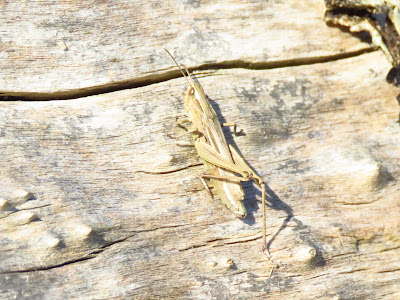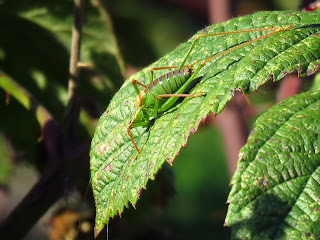
A warm and sunny mid October day, my initial plan today was to get the bus to Asda and walk to Noddle Hill to survey bush-crickets, but the bus strike put an end to that, and I decided to walk to East Park instead. A Black Swan had been in residence since Thursday, and I had never had one in Hull, so that was the excuse, and also, who needs an excuse to go to East Park, there is always something interesting going on.

The pair of Great Crested Grebes are still about.
Two Shovelers by the central island.
There were two Mute Swans looking ill, this one swam with eyes closed and neck feathers raised. A juvenile didn't look well either. I wonder if bird flu?
Ill juvenile Mute Swan.
Black Swan close up.
The Black Swan, which looked like a juvenile was interested on the Mute Swans.
The long resident drake Gadwall was easy to find today as it was very vocal. It was calling next to a female mallard, who was keeping a close eye on a passing buzzard.
Gadwall and mallard.
The fly-over buzzard with a very full crop.
I was surprised to see a Goosander, looking like it was still moulting, maybe a juvenile?
The only ringed gull I saw today was a Black-headed Gull from a Danish ringing scheme, previously seen by Wes Payne at East Park 'ZKC - ringed in 2009 as 3y+, making it at least 17! It looks like a true urban bird with all 38 previous sightings in Copenhagen during spring/summer.'
Three Migrant Hawkers were active by the boardwalk.
Red Admiral on Ivy blossom.
I checked for terrapins in the usual places, but it was only at 13:25 when I was on my way back that I spotted a male Cooter on an old Coot's nest by the central island.
As I headed back it was balmy, had to take my coat off. I peeked behind the tree trunk at Rockford Fields and counted 12 Long-winged coneheads, most of them females, basking, also a few Lesser Marsh Grasshoppers and Roesel's calling, although I failed to see any.
Long-winged conehead.
Lesser Marsh Grasshopper.
Long-winged Conehead inspecting her ovipositor.
Long-winged Coneheads.
Two Pied Wagtails by Wilmington Bridge.



































